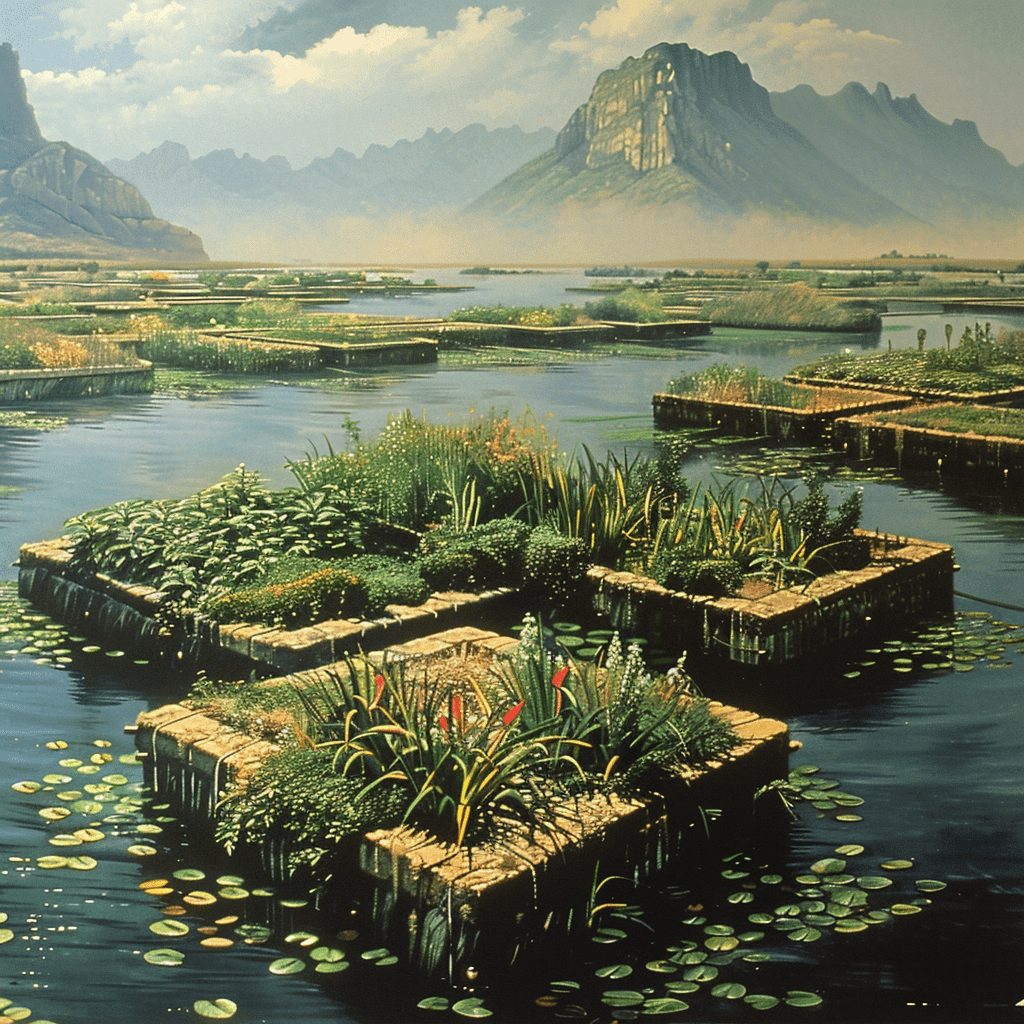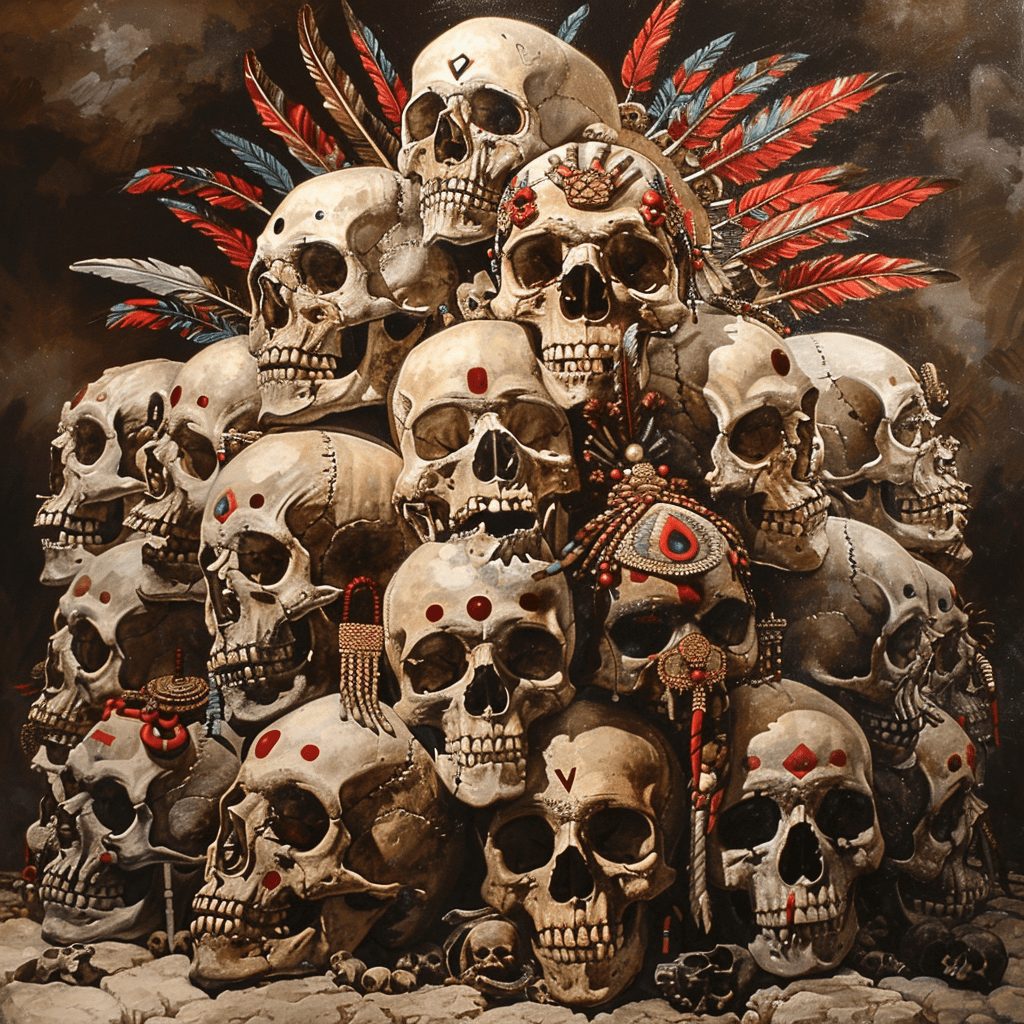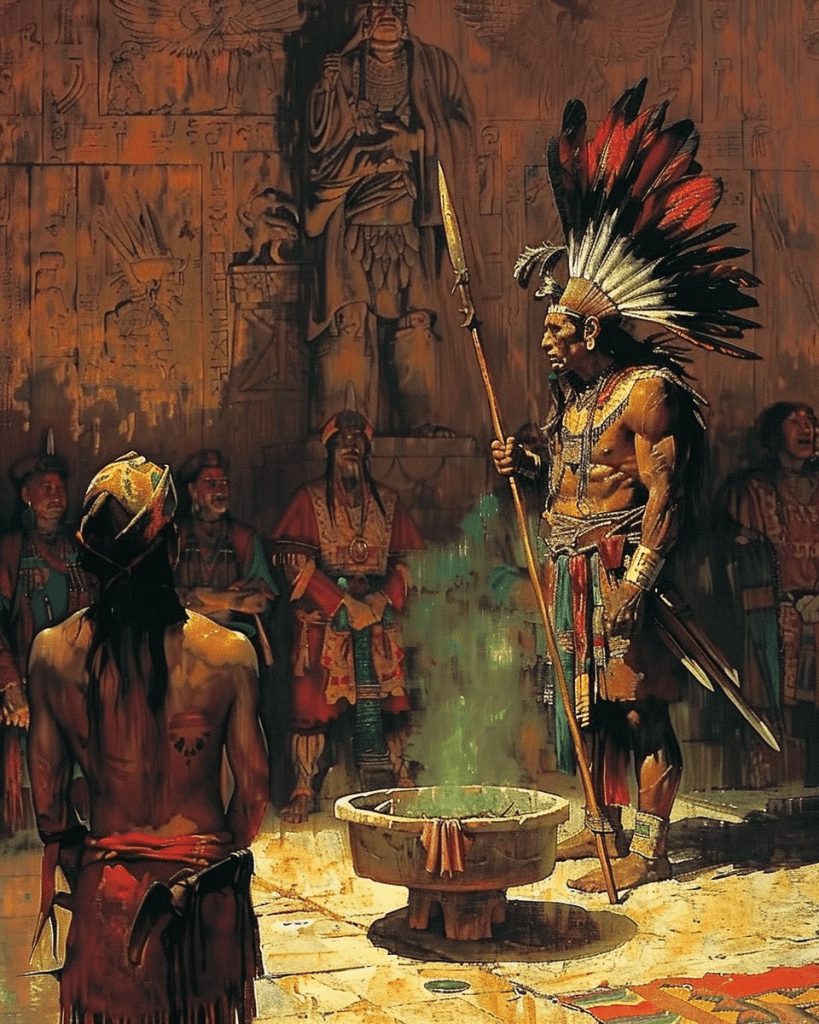The Aztecs, one of Mesoamerica’s most prominent civilizations, practiced a ritual that has both fascinated and horrified people for centuries: human sacrifice. This gruesome practice was not merely an act of barbarism but a cornerstone of their religious beliefs and societal structure.
The Aztecs believed that human sacrifice was necessary to nourish their gods and maintain the cosmic order, without which they feared the sun would cease to rise and the world would end.
This belief drove them to perform elaborate ceremonies where victims’ hearts were extracted and offered to the deities. The scale of these sacrifices was staggering, with hundreds of skulls discovered in archaeological sites revealing the massive extent of this practice.
While it’s easy to judge these ancient practices through a modern lens, understanding the Aztec worldview provides crucial context.
Their complex religious system, interwoven with political power and social hierarchy, created a society in which sacrifice was seen not just as necessary but also as honorable.
Victims were often promised a special place in the afterlife, a reward for their ultimate contribution to the cosmic balance.
Context of Aztec Civilization
The Aztec civilization was a complex society with intricate religious beliefs and a powerful empire. Their worldview and societal structure played crucial roles in shaping their practices, including human sacrifice.
The Aztec Empire
The Aztec Empire flourished in central Mexico from the 14th to 16th centuries. At its peak, it controlled a vast territory and millions of people.
The empire’s capital, Tenochtitlan, was a marvel of engineering and urban planning. Built on an island in Lake Texcoco, it boasted impressive pyramids, palaces, and canals.
Aztec society was highly stratified, with nobles, priests, warriors, and commoners each playing distinct roles. This hierarchy was reflected in their rituals and ceremonies.
The Aztecs were skilled farmers who developed innovative agricultural techniques like chinampas—artificial islands for crop cultivation. They also excelled in trade, art, and astronomy.

Religious Beliefs and Deities
Aztec religion was polytheistic, with a pantheon of gods governing different aspects of life and nature. Huitzilopochtli, the sun and war god, held particular importance.
The Aztecs believed that the gods had sacrificed themselves to create the world. This concept underpinned their practice of human sacrifice, which they saw as a way to repay this divine debt.
Their cosmic worldview was cyclical, with the universe constantly teetering on the brink of destruction. Regular sacrifices were deemed necessary to maintain cosmic balance and ensure the sun’s continued rise.
Priests held immense power in Aztec society. They interpreted the will of the gods and performed crucial rituals. They believed that blood offerings nourished the deities and sustained the world’s existence.
Ritual Significance of Human Sacrifice
Human sacrifice held profound meaning in Aztec society, intertwining religious beliefs with cosmic order and earthly concerns. It served as a vital link between the mortal realm and divine forces, shaping Aztec culture and practices.
Connection to Agriculture and Warfare
The Aztecs believed that human sacrifice nourished the gods, ensuring cosmic balance and agricultural prosperity. They saw blood as a potent life force, essential for sustaining deities who controlled natural phenomena.
This belief system created a unique cycle: warfare provided captives for sacrifice, which in turn ensured bountiful harvests. The practice became a self-perpetuating engine of Aztec expansion and agricultural success.
Rituals often coincided with agricultural cycles. The most elaborate ceremonies occurred during planting and harvest seasons, reinforcing the connection between human offering and crop yield.
The Role of Priests and Temples
Aztec priests played a central role in sacrifice rituals, acting as intermediaries between humans and gods. They underwent rigorous training to perform complex ceremonial procedures with precision.
The most common form of sacrifice involved heart extraction. Priests skillfully removed the still-beating heart and offered it to deities like Huitzilopochtli, the sun god.
Temples served as the stage for these rituals. The iconic stepped pyramids of Aztec cities weren’t just architectural marvels; they were cosmic mountains where heaven and earth met.
At their summit, priests performed sacrifices in full view of the populace, reinforcing social hierarchy and religious devotion.
Methods of Sacrifice
The Aztecs employed various techniques for human sacrifice, each with its own ritual significance. These methods were deeply ingrained in their religious practices and societal beliefs.
The Heart Extraction Technique
The heart extraction ritual was the most common and symbolically important form of Aztec sacrifice.
Priests would lay the victim on a stone slab atop a temple or pyramid. Using an obsidian blade, they would make a precise incision in the chest.
With practiced skill, they would reach in and remove the still-beating heart. This organ was considered a precious offering to the gods, particularly the sun deity Huitzilopochtli.
The Aztecs believed this act sustained the cosmos and ensured the sun’s continued rise. The body would then be rolled down the temple steps, a visceral display of religious devotion and power.
Other Forms of Sacrifice
While heart extraction was prominent, the Aztecs utilized other sacrificial methods as well.
Drowning was used in rituals for water deities. Victims were submerged until they ceased breathing, their last bubbles seen as the god accepting the offering.
Arrow sacrifice involved tying the victim to a frame and shooting them with arrows. This method was often associated with hunting deities. Flaying, where the victim’s skin was removed, was practiced in honor of fertility gods.
Decapitation and burning were also employed in specific rituals. Each method corresponded to particular gods or desired outcomes, reflecting the complex tapestry of Aztec religious beliefs.
Cultural Impact and Societal Participation
Human sacrifice permeated Aztec society, shaping daily life and communal events. The practice influenced social structures, religious beliefs, and public gatherings, creating a unique cultural framework that defined Aztec civilization.
Integration into Daily Life
Aztec human sacrifice wasn’t confined to grand spectacles; it wove itself into the fabric of everyday existence.
Children learned about sacrificial rites from an early age, through stories and religious education. Families often dedicated their offspring to temples, where they might one day become sacrificial victims.
The threat of becoming a sacrifice loomed over captured enemies and slaves. This created a social hierarchy where the act of sacrifice served as both punishment and honor.
Interestingly, many victims went willingly, believing their death would secure a privileged afterlife.
Aztec art and architecture reflected this cultural fixation. Skull racks (tzompantli) displayed victims’ heads in public spaces, serving as constant reminders of the practice’s importance.
Public Rituals and Festivals
Large-scale sacrificial events punctuated the Aztec calendar, drawing massive crowds.
These weren’t mere spectacles but communal affairs where everyone played a role.
Priests performed the rituals, warriors captured victims, and ordinary citizens participated as spectators or in supporting roles.
The most significant festival, dedicated to the god Huitzilopochtli, could see thousands sacrificed over four days.
Such events reinforced social cohesion and religious devotion. They also served political purposes, demonstrating Aztec power to allies and enemies alike.
Smaller, more frequent rituals took place throughout the year. These often coincided with agricultural cycles, tying human sacrifice to the people’s daily concerns about crop yields and weather patterns.
Historical Perspectives
The brutal practice of Aztec human sacrifice has been viewed through different lenses over time. Eyewitness accounts from Spanish conquistadors and modern archaeological discoveries have shaped our understanding of this controversial ritual.
Spanish Conquistadors’ Accounts
The Spanish conquistadors who encountered the Aztec civilization in the early 16th century were horrified by the practice of human sacrifice.
Their vivid descriptions painted a gruesome picture of hearts ripped from living victims atop grand pyramids.
Bernal Díaz del Castillo, a soldier who accompanied Hernán Cortés, wrote of skull racks displaying thousands of severed heads.
These firsthand accounts, while potentially exaggerated, provided the initial framework for understanding Aztec sacrificial practices.
However, it’s crucial to consider the conquistadors’ motivations. Their reports often served to justify the conquest and forced conversion of the Aztecs. The shocking nature of human sacrifice made for compelling propaganda back in Europe.

Modern Archaeological Evidence
Recent archaeological discoveries have corroborated many aspects of the Spanish accounts.
Excavations at the Templo Mayor in Mexico City have unearthed numerous sacrificial remains, including decapitated skulls and dismembered bodies.
Scientific analysis of these remains has revealed fascinating details.
Isotope studies of teeth suggest many victims came from distant regions, supporting the idea that conquered peoples were often sacrificed.
Archaeologists have also uncovered elaborate sacrificial tools, such as obsidian blades and stone altars.
These findings provide tangible evidence of the scale and sophistication of Aztec sacrificial rituals.
Despite these discoveries, debate continues about the frequency and scale of sacrifices.
Some scholars argue that Spanish accounts may have inflated the numbers, while others maintain that the practice was indeed widespread.

